18 Places You Should Avoid Hanging a Hummingbird Feeder
Hanging hummingbird feeders is a great way to attract these pleasant pollinators to your garden and delight in their agile antics. However, a few places could cause your petite pals more harm than good.
In this article, we’ll cover 18 places to avoid hanging a hummingbird feeder and where to place them instead.
1. Directly Against the House
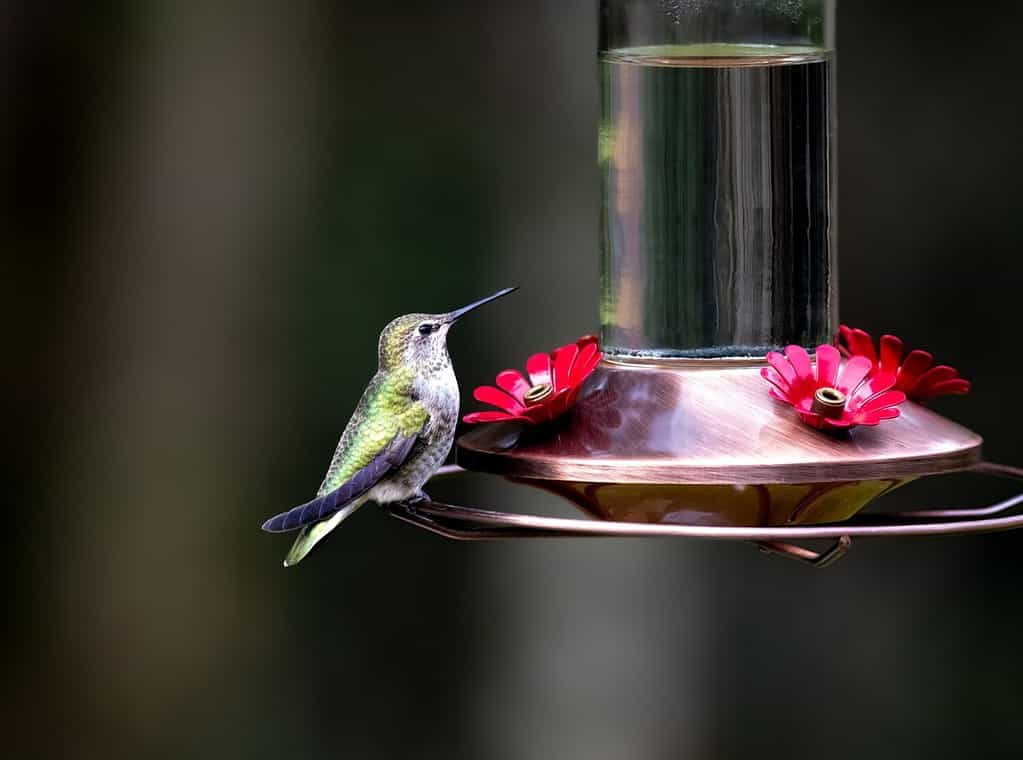
©Jeff Westhead/Shutterstock.com
There are a few reasons to avoid hanging a hummingbird feeder directly next to your house.
First, hummingbirds like some room to operate around the feeder. They need space to check their surroundings and develop their plan of attack.
Second, if the feeder is too close to your house, you won’t be able to see it when glancing out the window or enjoying leisure time outdoors.
Instead, hang it a few feet away so it’s visible for you and easy to maneuver for the hummingbirds.
2. In Direct Sunlight
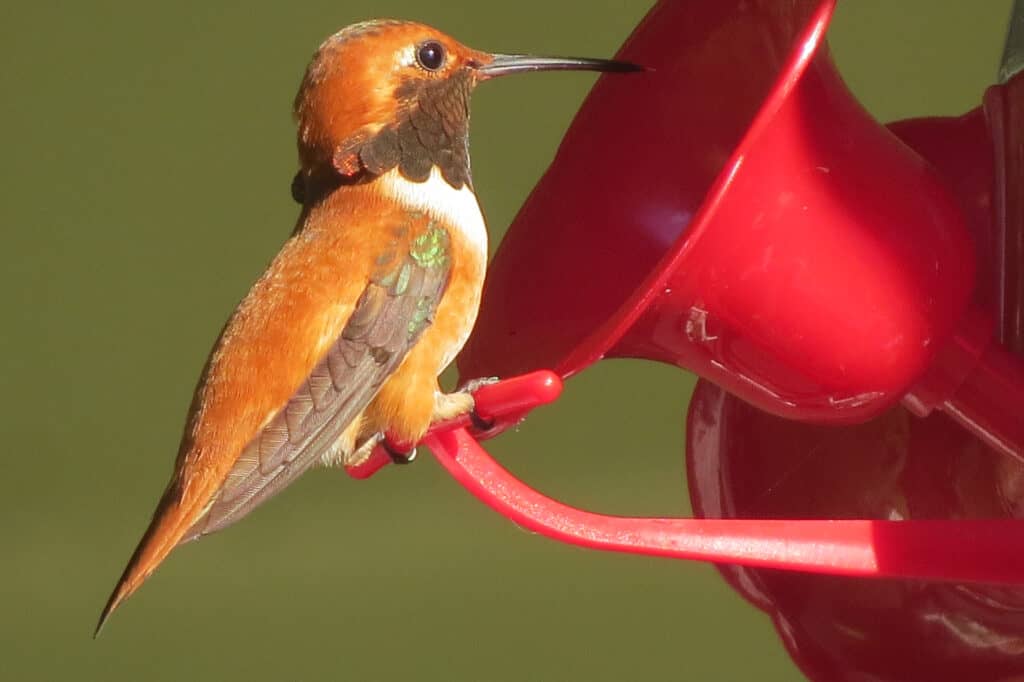
©Rachel Lambert/Shutterstock.com
While the idea of having a hummingbird bar might seem entertaining, fermented nectar is unhealthy for the little guys. Sugar water, when left in direct sunlight, will ferment quicker than usual.
Place your hummingbird feeder somewhere that gets shade during peak daylight hours. This shade will also provide the birds with a nice place to cool down and recuperate.
3. Beside Your Clothesline

©Rachelle007/ via Getty Images
Don’t let their small stature fool you; hummingbirds are fierce! They’re incredibly territorial toward other hummingbirds and people who infringe on their territory.
While hanging a hummingbird feeder near the clothesline seems to make sense, it’s a little too close for comfort when your schedules align. The hummingbird may avoid the feeder when they need it if you’re close or attack you. Their beaks may be tiny, but they’re sharp!
4. Touching Foliage or Flowers
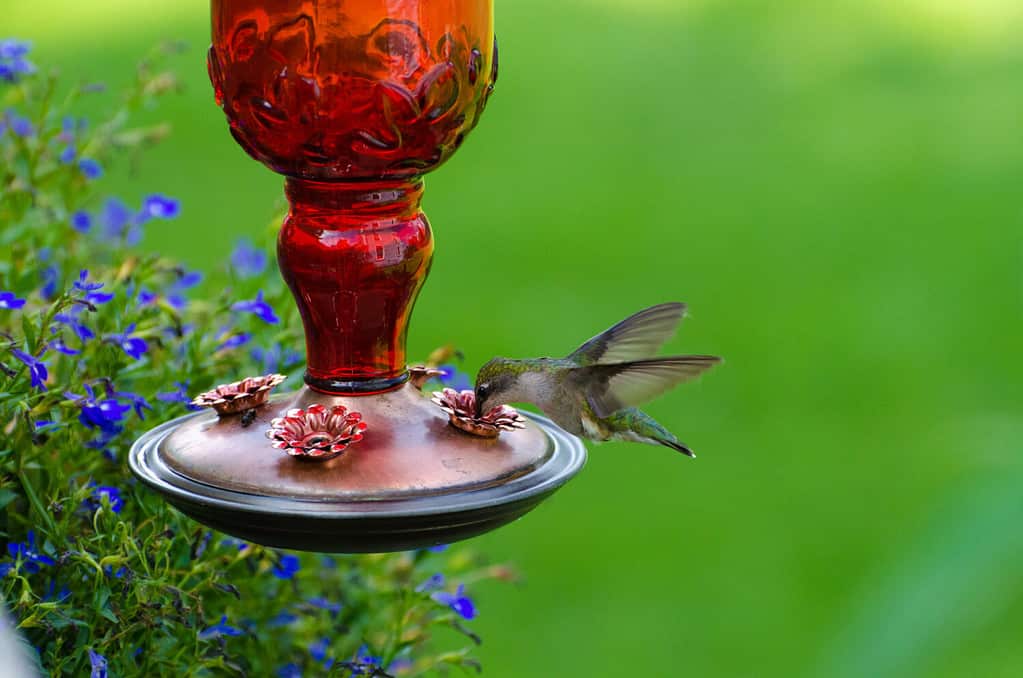
©redtbird02/Shutterstock.com
It’s ok to place your hummingbird feeder near foliage or flowers. In fact, planting them close to flowers can help encourage these pleasant pollinators to share the wealth. However, the feeder shouldn’t be touching the foliage or flowers for several reasons.
As mentioned previously, hummingbirds need space to zip around the feeder to find the best approach. If the feeder is too close to the foliage, its path may be impeded.
Many people are unaware that hummingbirds have several natural predators, including praying mantises. If the hummingbird gets too close to foliage, it could become a snack.
If the foliage is too dense, the hummingbird may not see the feeder. While the iconic bright red and yellow shades are designed to stand out to these feathered friends, the obstruction could leave them unnoticed.
Allow at least one foot of room between your hummingbird hanger and surrounding plant life.
5. In Wide Open Spaces
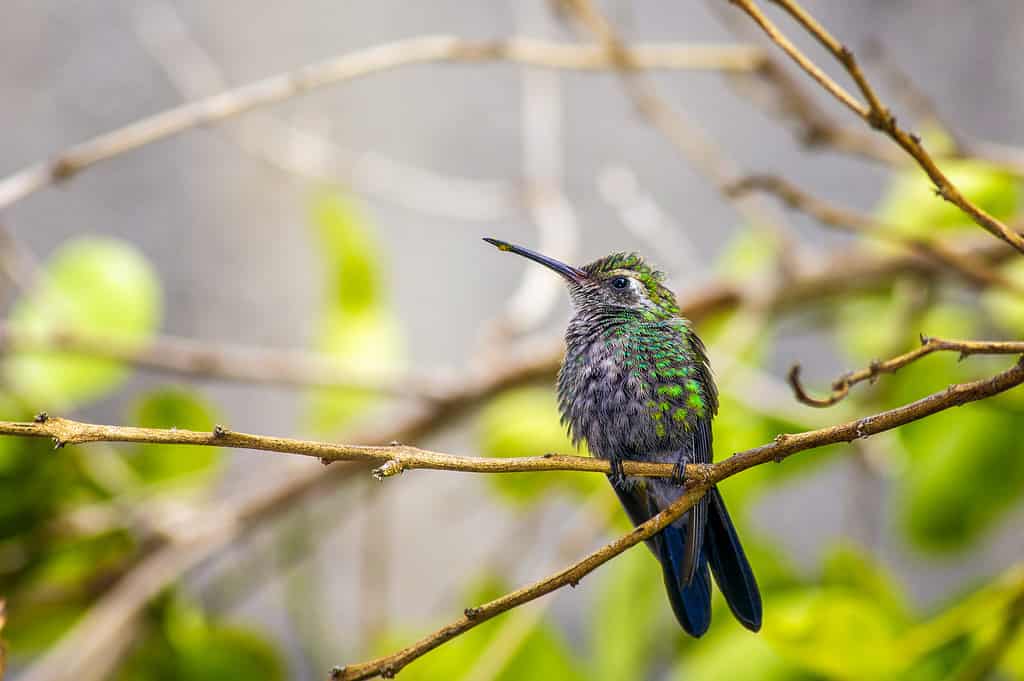
©iStock.com/Wirestock
Conversely, placing your hummingbird feeder in a wide, open space is also bad.
Putting the feeder in the middle of the yard provides no coverage from other predators, like wandering cats. This placement also contributes to full sun exposure and nectar fermentation.
Another notable issue with open fields and yards is the lack of shelter from extreme winds and rains. Excess rain could dilute your mixture and make it unappealing. High winds could break the feeder or cause the nectar to spill along the outside, which attracts hornets.
Ensure there are some nearby windbreaks and a few places for hummingbirds to hide if the neighborhood cat becomes too curious.
6. Close to (Not On) a Window
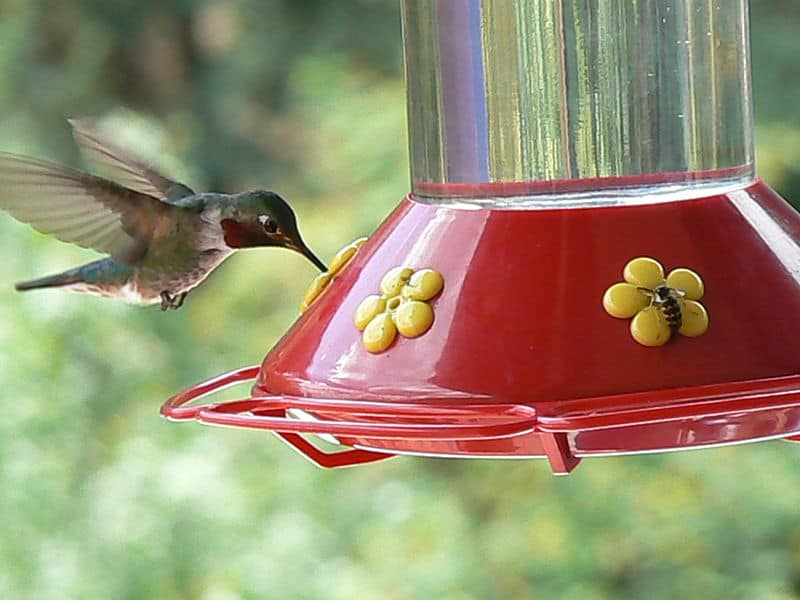
©Garrett Davis – Public Domain
You shouldn’t hang a hummingbird feeder too close to a window. It should be hanging at least 8-12 feet away from the window or snug against the window.
This advice may seem contradictory, given the popularity and success of window-mounted feeders. However, when a hummingbird approaches a window-mounted feeder, it can see the window and notice the dangerous surface.
When a hummingbird approaches a hanging feeder near a house, it may not recognize the window as a solid surface. If the bird gets startled, it could zip away into the window and cause itself irreparable harm.
If you like having a hanging feeder near a window, invest in some bird-friendly window stickers to help avoid collisions. Otherwise, choose a mounted feeder over a hanging feeder.
7. Near the Ground
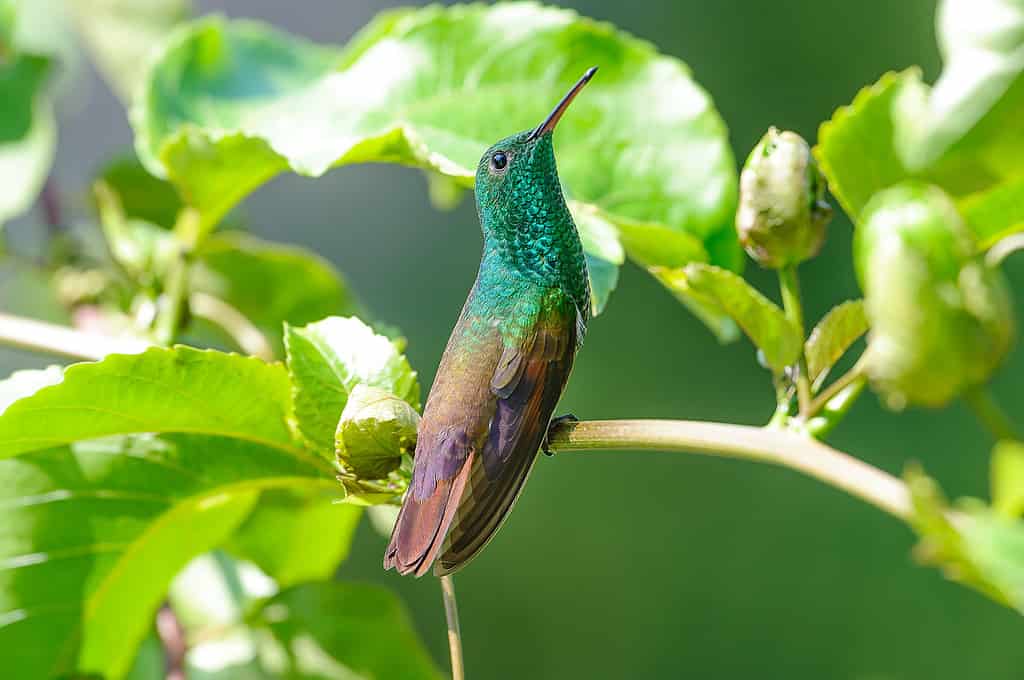
©Wildpix645/iStock via Getty Images
Placing your feeder too close to the ground could put your hummingbird pals at increased risk of nearby predators. Low placement also makes it more likely that grass cuttings, dust, and other pollutants may interfere with the feeder.
Ensure your hummingbird feeder is hanging at least 5-6 feet from the ground to avoid these issues.
8. High in a Tree
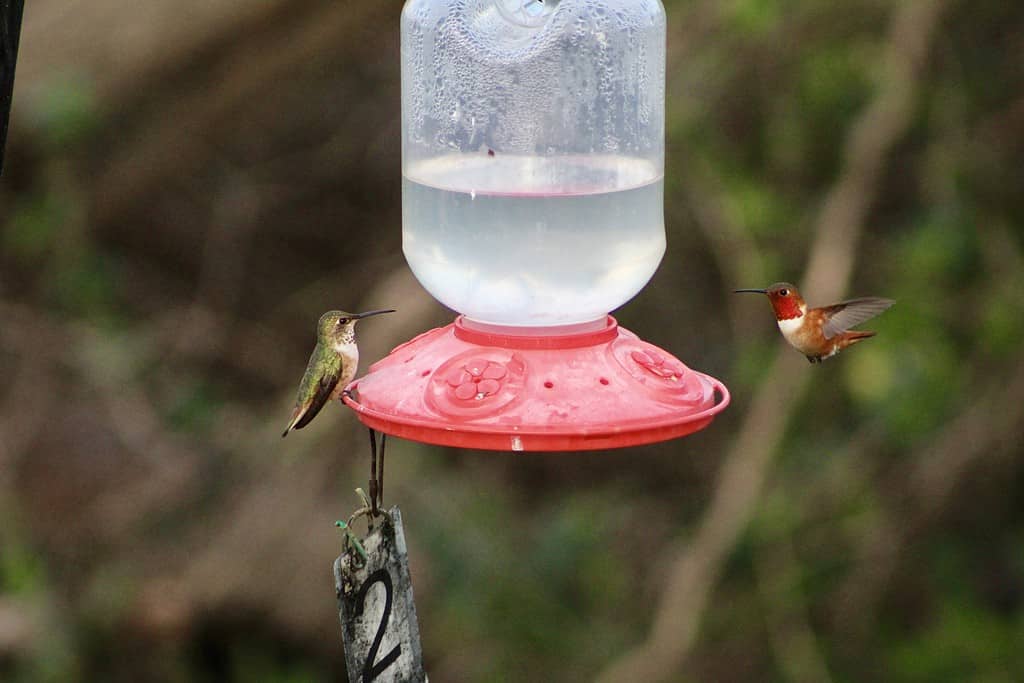
©Joseph Tointon/iStock via Getty Images
Placing the feeder too high can also cause trouble—for you! If it’s too high, you’re less likely to refill it or check on it. Stepping on a ladder increases your risk of injury.
Avoid these problems by making the feeder as convenient to maintain as possible.
9. Near Other Bird Feeders
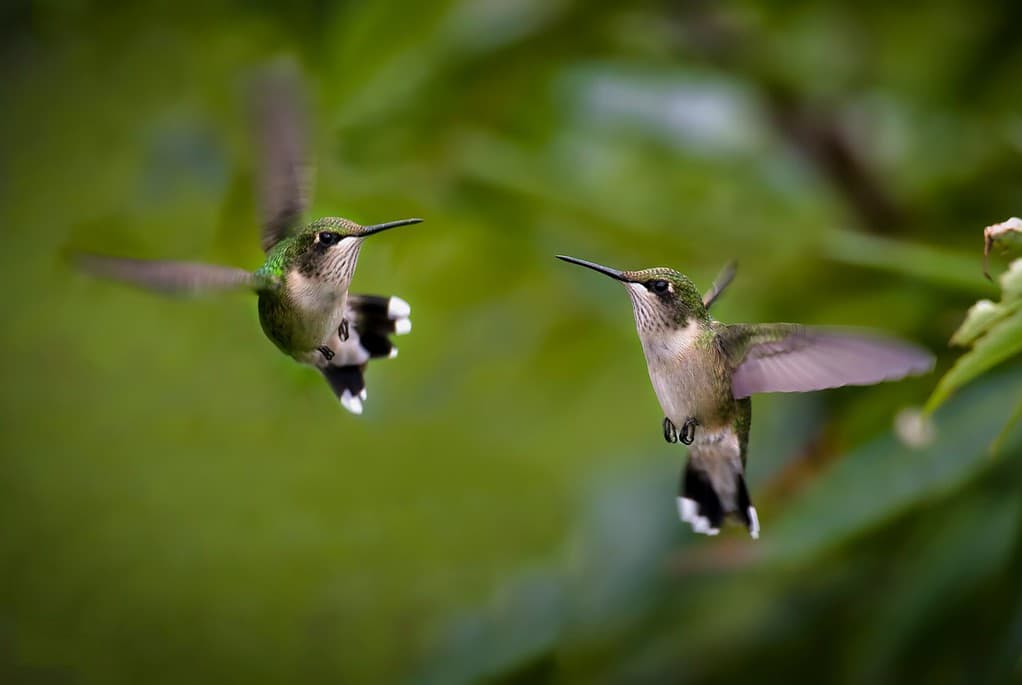
©Fiona M. Donnelly/Shutterstock.com
Don’t place your hummingbird feeder near other bird feeders, including other nectar feeders and bird seeds.
Hummingbirds are territorial. They’ll fight each other and other birds to stake their claim.
Avoid this by placing your nectar feeders at least 10 feet apart. It’s always a good idea to have several feeders to attract multiple hummingbirds.
10. From Gutters
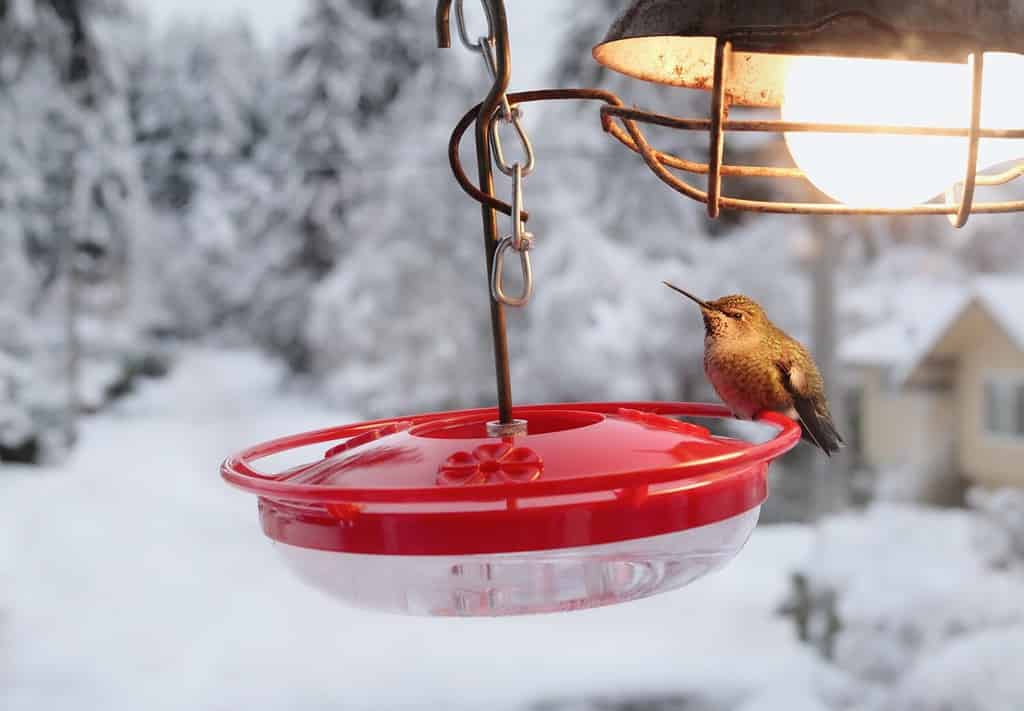
©sophiecat/Shutterstock.com
Gutters and eaves seem like great places to hang feeders. However, they could be at risk of extreme weather or dirty overspill if your gutters are unkempt.
If you choose to hang them from your eaves or gutters, be proactive in keeping the area clean and ensuring the feeders are secured.
11. Close to Driveways or Roads
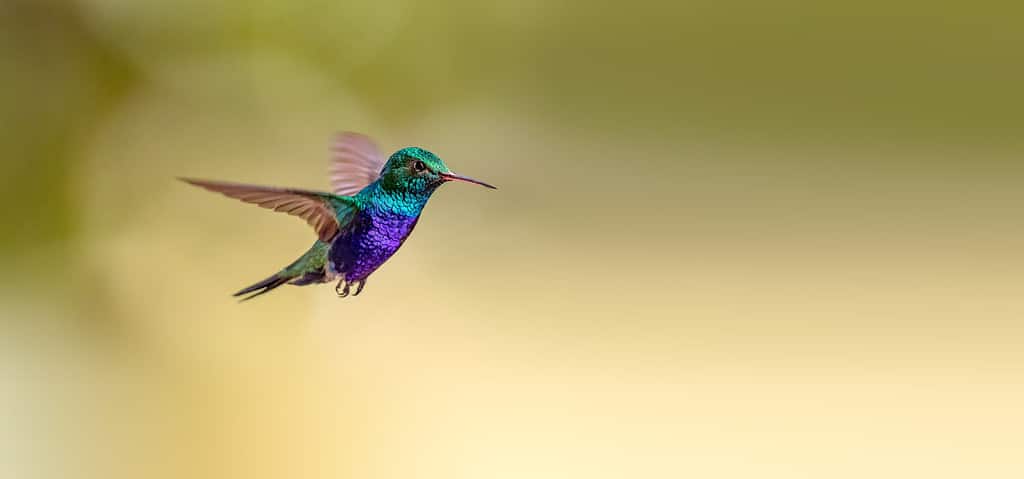
©Wang LiQiang/Shutterstock.com
Keep your feeders away from high-traffic areas and loud sounds. While the rushing road or your busy driveway won’t harm the hummingbirds, the noise could deter them from visiting the feeder.
Try to place your hummingbird feeder in a quiet part of the yard, at least a few feet back from busy areas.
12. Near Pest Problem Areas
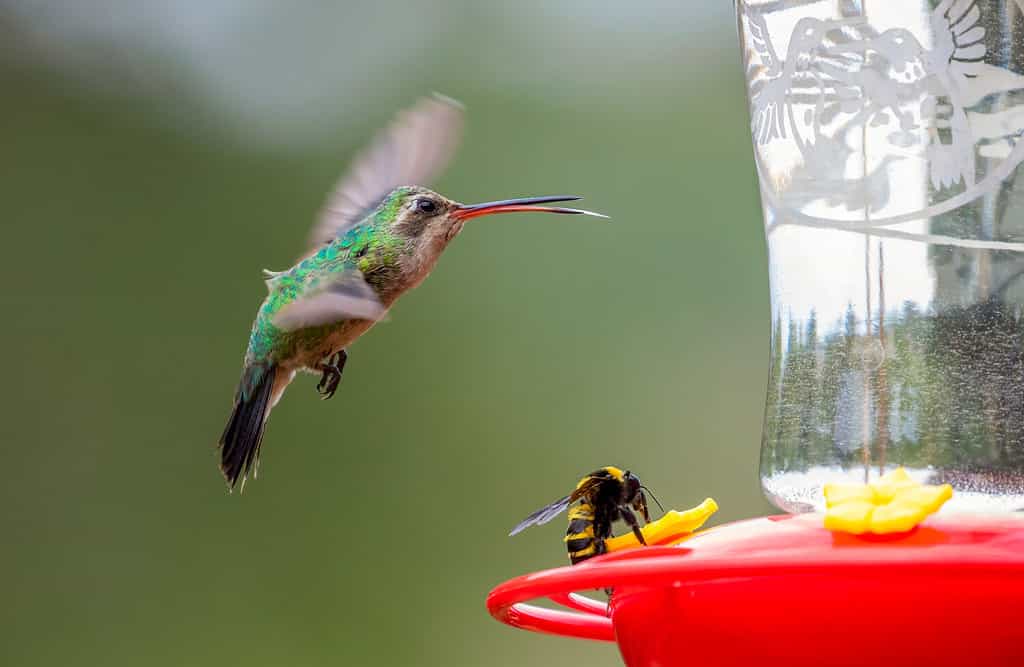
©Danita Delimont/Shutterstock.com
Try to avoid hanging your feeder near places where ants or hornets are a problem, as they’ll likely try to take over the feeder. Again, this won’t harm the hummingbirds, but it’s a nuisance and prevents them from getting their food.
If pests start accumulating near your feeder, remove it and give it a deep cleaning, then hang it elsewhere.
13. Near Your Grill
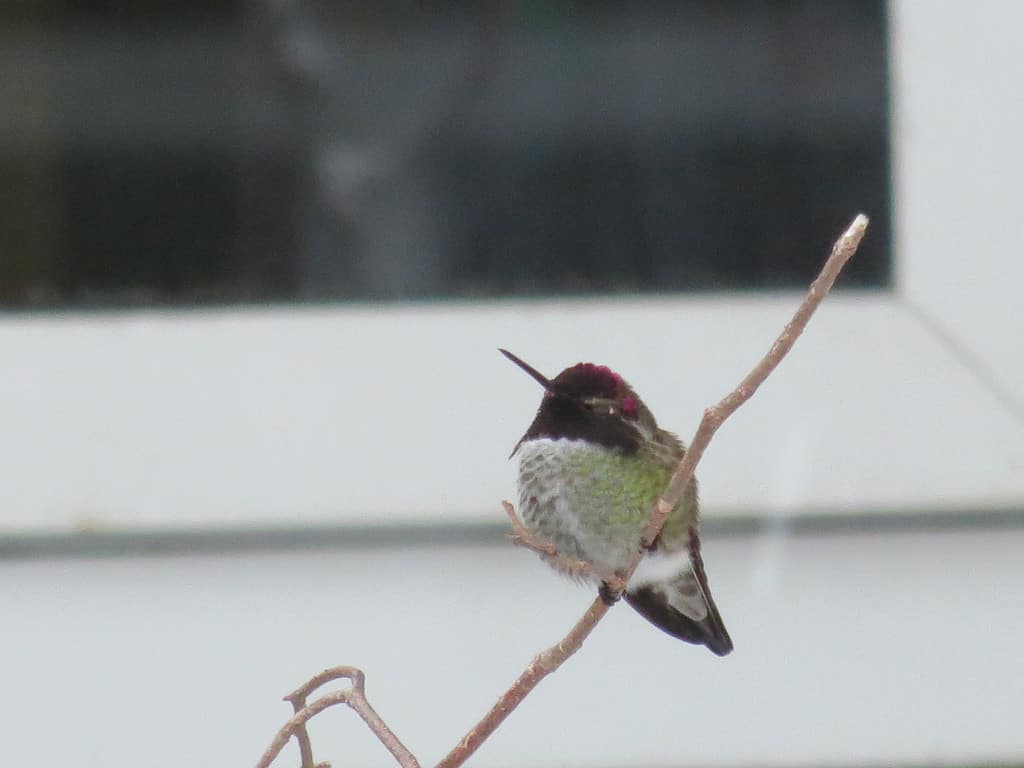
©Storm / CC BY-SA 2.0 – License
While dining with your feathered friends may seem charming, place the feeder at least 10 feet from your grill.
The smoke and fumes could harm them if they stop in to visit the feeder while you’re cooking dinner. The smell and sound could also deter them from visiting.
14. Near Reflective Decor
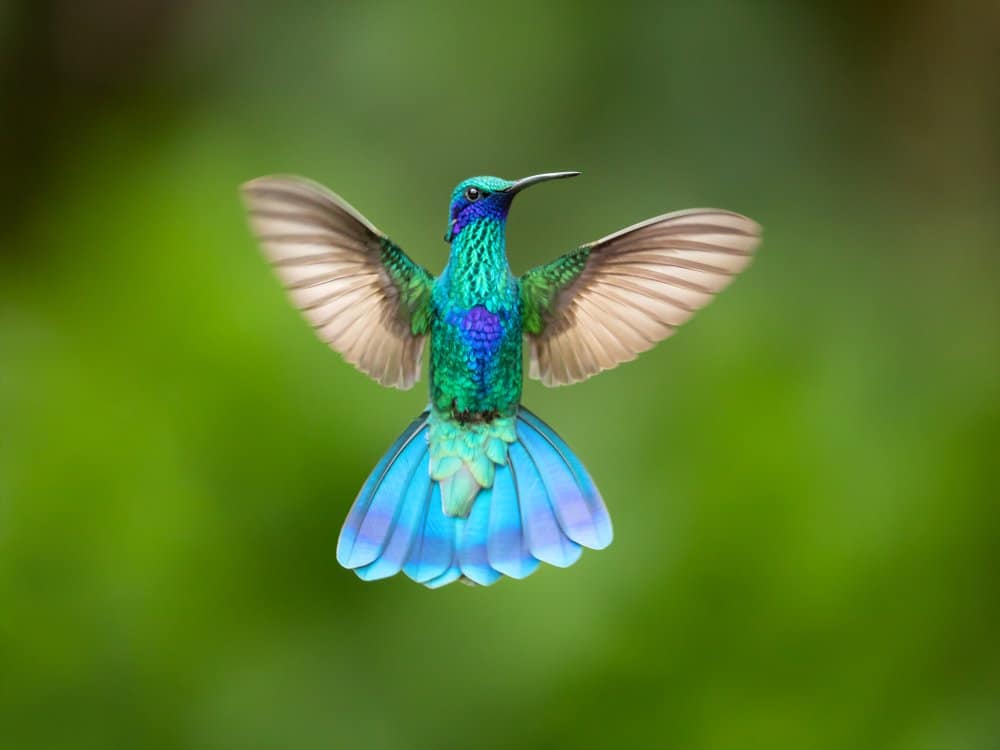
©Milan Zygmunt/Shutterstock.com
Mirrors are dangerous for birds. The reflection often looks like a continuation of the natural surroundings, leading to crashes. This issue is the main cause of fatal window collisions, which kill 365 to 988 million birds in the US annually.
Consider taking down reflective decor rather than moving your feeder. While it’s beautiful when it catches the light, it can harm the natural inhabitants of your yard.
15. Above Water Features
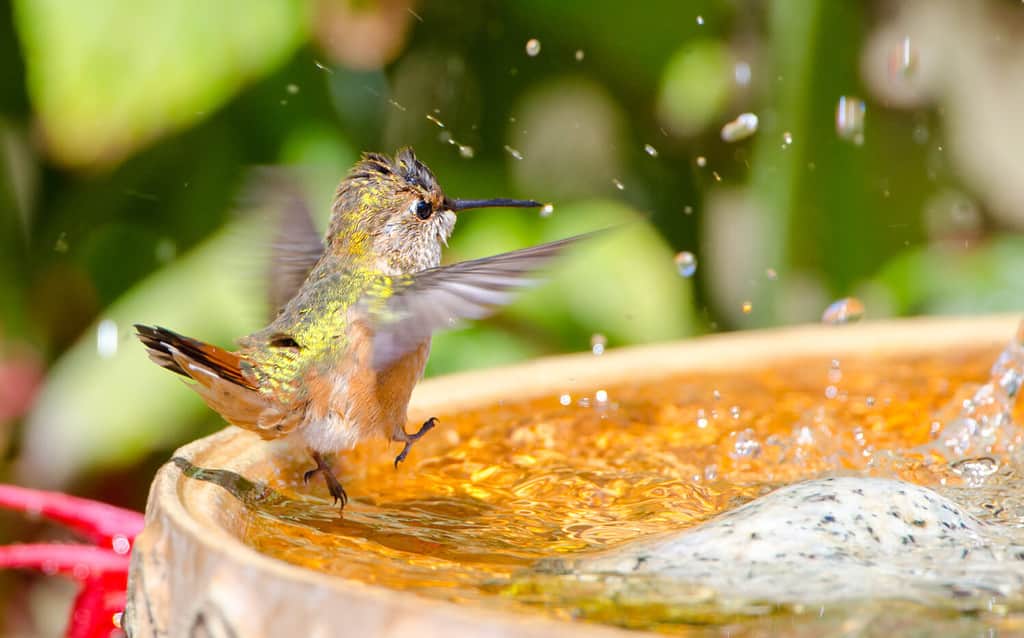
©Birdiegal/Shutterstock.com
Avoid placing your feeder above ponds, creeks, fountains, or pools. Hard rains and winds can force hummingbirds downward, increasing their risk of drowning.
Instead, place the feeder in a dry, safe space over a firm surface.
16. In Sprinkler Paths
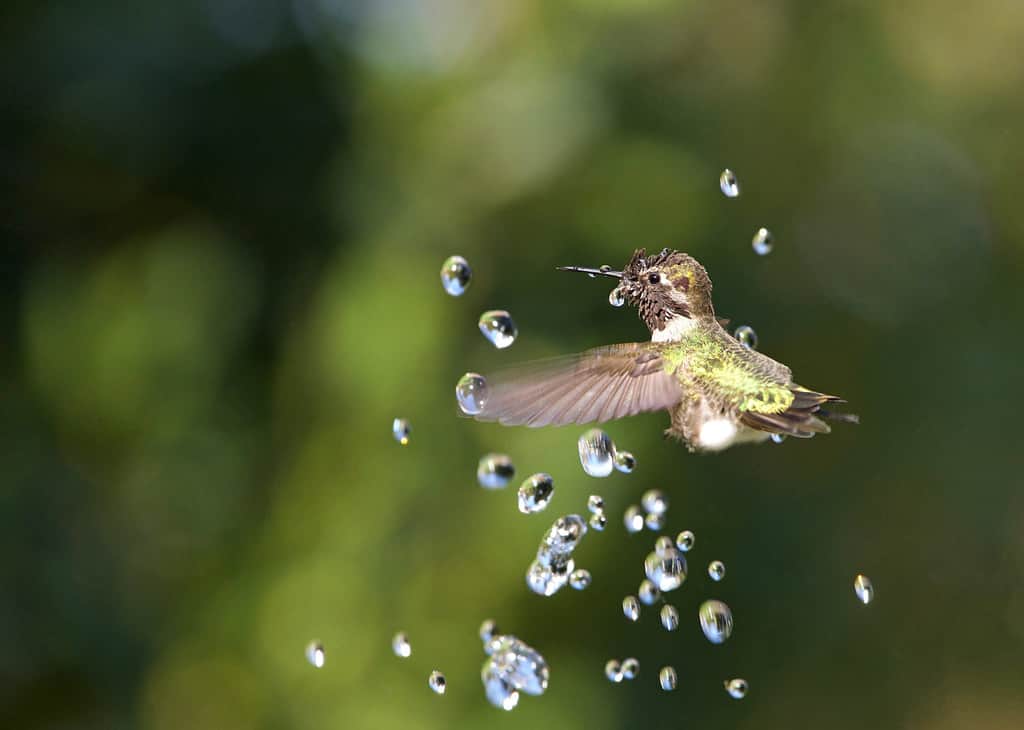
©Sheila Fitzgerald/Shutterstock.com
Like heavy rains, sprinklers can knock hummingbirds off their course and force them to the ground, putting them at greater risk of predators.
The water can also dilute the nectar, making it unappealing to the birds.
17. Close to Nests
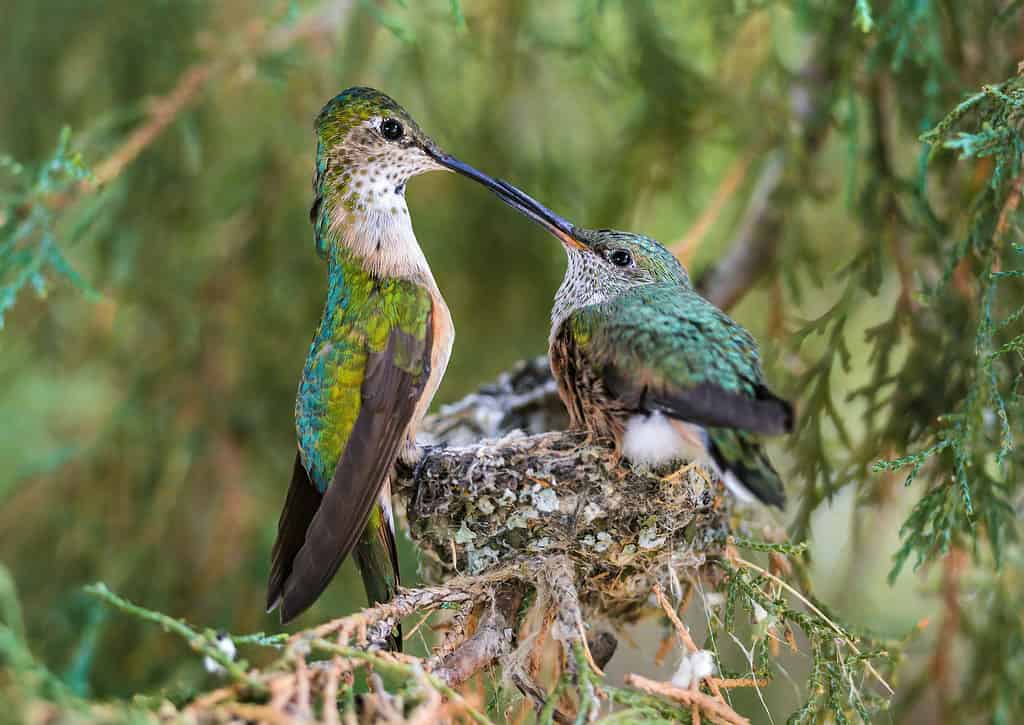
©Susan Hodgson/Shutterstock.com
Avoid placing the feeders too close to hummingbird nests. While the intention is good in setting up a convenient feeding area, it may alert predators to the nests’ location and put vulnerable eggs and chicks at risk.
18. Near Areas with Pesticide Use
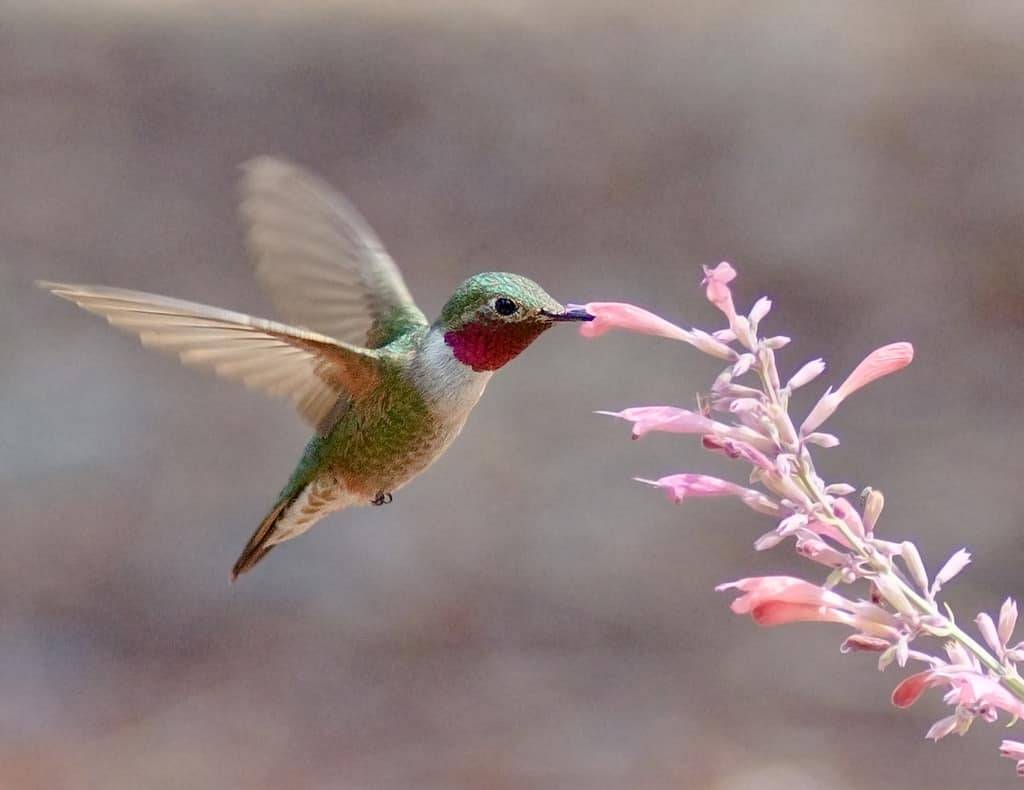
©M-C-C/iStock via Getty Images
If you live near a farm or a neighbor known for using pesticides, try to place the feeder somewhere safe from contamination. Be mindful of wind patterns, and avoid using pesticides in your yard.
If you do a pesticide treatment, take the feeders down until the fumes dissipate.
Summary of Places to Avoid Hanging a Hummingbird Feeder
| Rank | Place |
|---|---|
| 1 | Directly Against the House |
| 2 | In Direct Sunlight |
| 3 | Beside Your Clothesline |
| 4 | Touching Foliage or Flowers |
| 5 | In Wide Open Spaces |
| 6 | Close to (Not on) a Window |
| 7 | Near the Ground |
| 8 | High in a Tree |
| 9 | Near Other Bird Feeders |
| 10 | From Gutters |
| 11 | Close to Driveways or Roads |
| 12 | Near Pest Problem Areas |
| 13 | Near Your Grill |
| 14 | Near Reflective Decor |
| 15 | Above Water Features |
| 16 | In Sprinkler Paths |
| 17 | Close to Nests |
| 18 | Near Areas with Pesticide Use |









